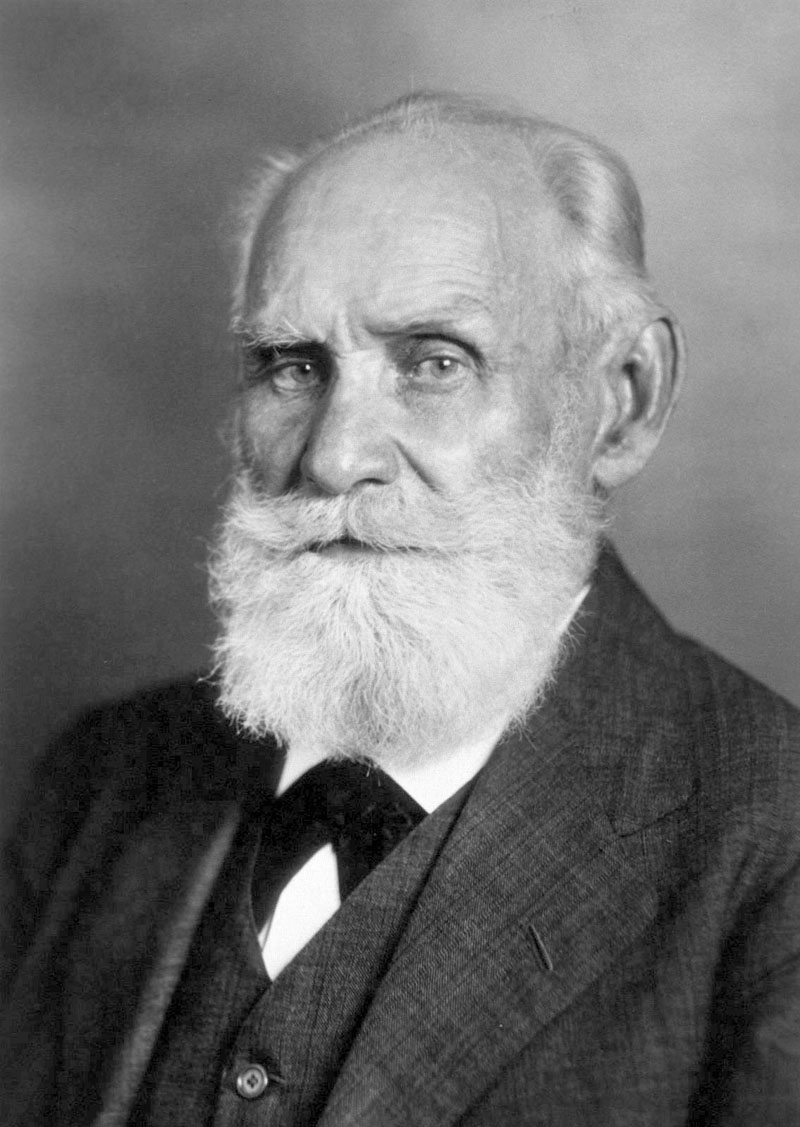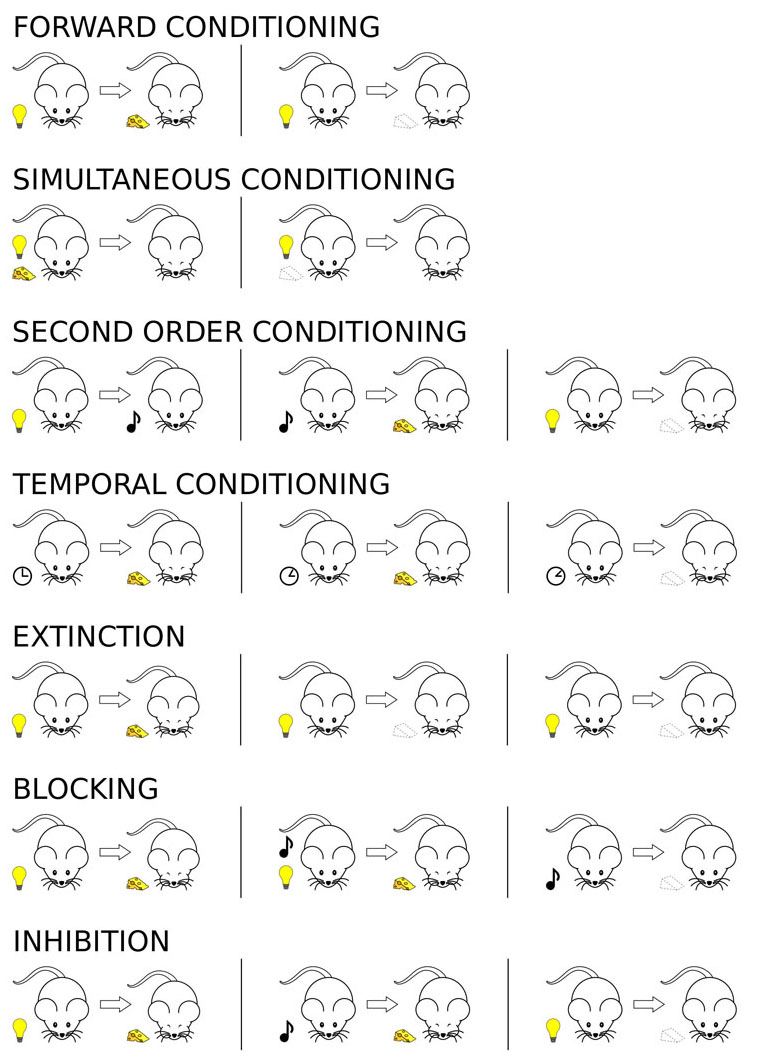Classical Conditioning
- Ivan Pavlov was a Russian physiologist known primarily for his work in classical conditioning. His initial interest in classical conditioning occurred almost by accident during one of his experiments on digestion in dogs.
- Classical conditioning is a learning process in which an innate response to a potent stimulus comes to be elicited in response to a previously neutral stimulus; this is achieved by repeated pairings of the neutral stimulus with the potent stimulus.
- In classical conditioning, the conditioned stimulus is the neutral stimulus (e.g., the sound of a tuning fork).
- The unconditioned stimulus is biologically potent (e.g., the taste of food).
- The unconditioned response to the unconditioned stimulus is an unlearned reflex (e.g., salivation).
- After repeated pairing of conditioned stimulus with an unconditioned stimulus the organism exhibits a conditioned response to the conditioned stimulus when the conditioned stimulus is presented alone.
- Aversive conditioning is classical conditioning to an unpleasant unconditioned stimulus.
- During acquisition, the learning phase during which a conditioned response is established, the conditioned stimulus and the unconditioned stimulus are paired.
- Extinction is the process of making a learned behavior disappear, the experimenter presents a CS alone, without the presence of the US. Once this process is repeated continuously, eventually, the CS will stop eliciting a CR.
- Spontaneous recovery is a phenomenon of learning and memory which was first seen in classical (Pavlovian) conditioning and refers to the re-emergence of a previously extinguished conditioned response after a delay.
- Renewal is a reemergence of a conditioned response following extinction when an animal is returned to the environment in which the conditioned response was acquired.
- Stimulus generalization is said to occur if, after a particular CS has come to elicit a CR, another similar stimulus will elicit the same CR. Usually the more similar are the CS and the test stimulus the stronger is the CR to the test stimulus.
- One observes stimulus discrimination when one stimulus (CS1) elicits one CR and another stimulus (CS2) elicits either another CR or no CR at all. This can be brought about by, for example, pairing CS1 with an effective US and presenting CS2 with no US.
- In classical conditioning, higher-order conditioning is a form of learning in which a stimulus is first made meaningful or consequential for an organism through an initial step of learning, and then that stimulus is used as a basis for learning about some new stimulus.
- Latent inhibition refers to the observation that a familiar stimulus takes longer to acquire meaning (as a signal or conditioned stimulus) than a new stimulus. This process inhibits the formation of memory by preventing learning of the observed stimuli.
- A phobia is a type of anxiety disorder, usually defined as a persistent fear of an object or situation in which the sufferer commits to great lengths in avoiding, typically disproportional to the actual danger posed, often being recognized as irrational.
- Fetishism is a sexual focus on a nonliving object or nongenital body part.

